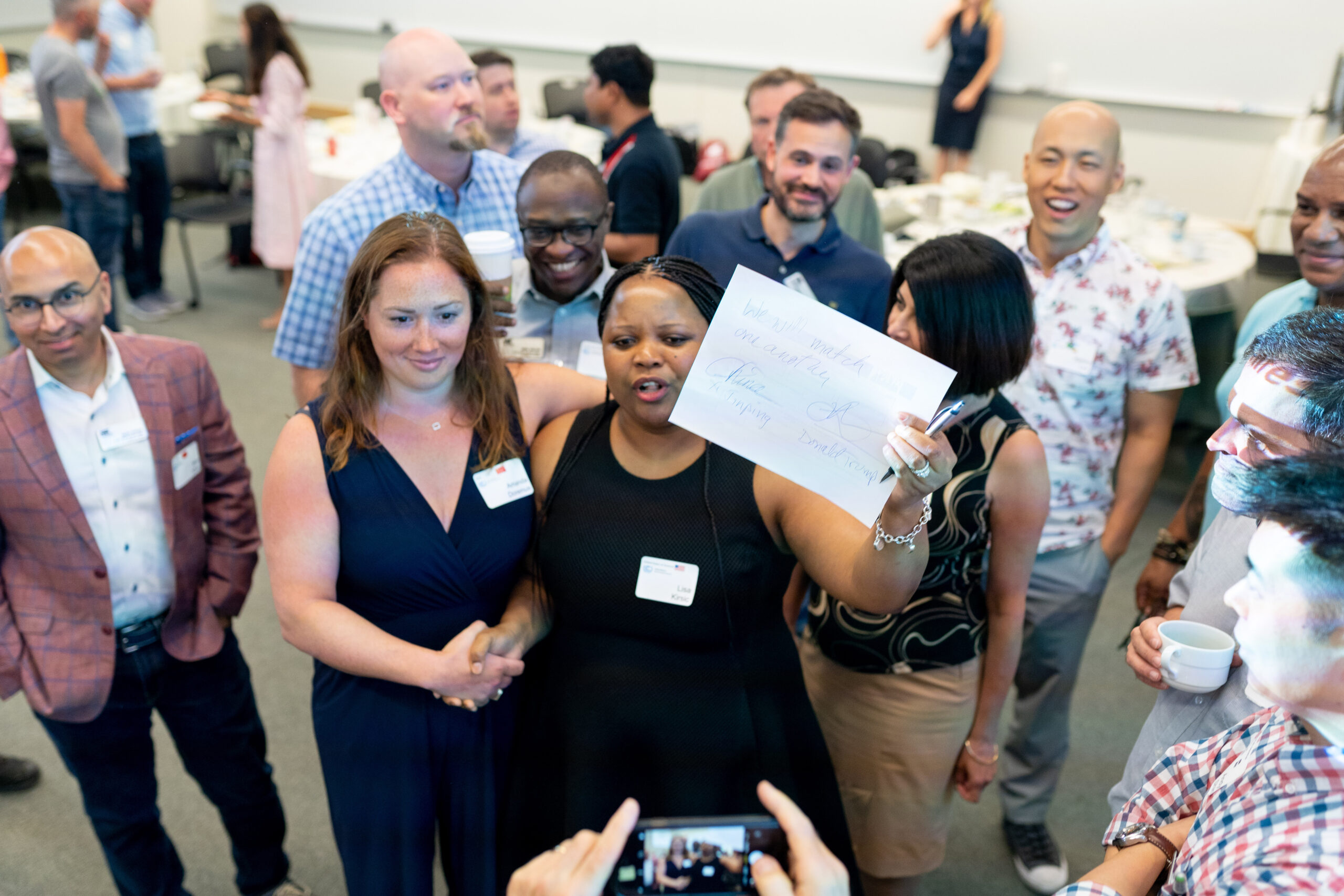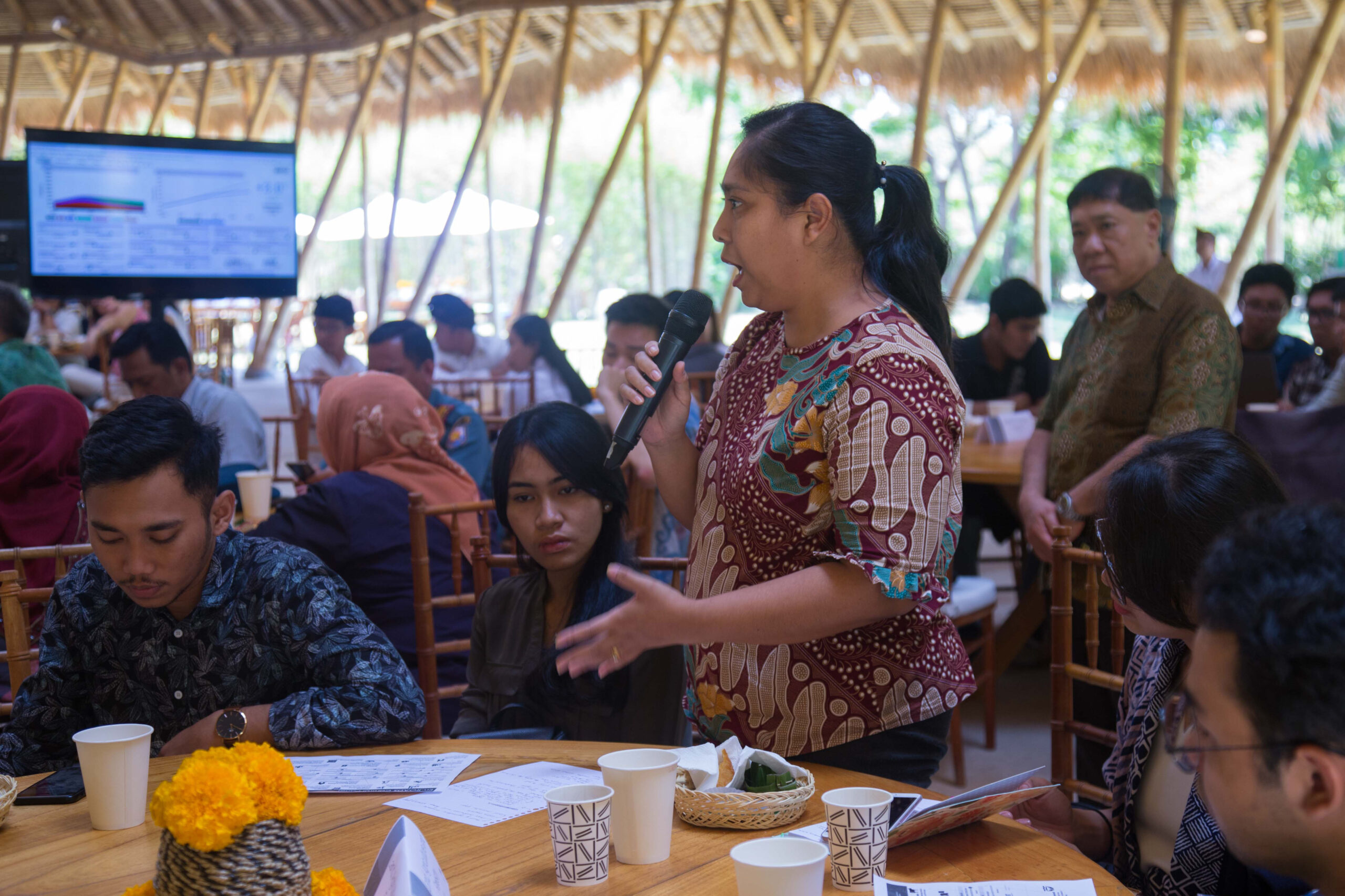Who We Are
Climate Interactive is rooted in the fields of system dynamics modeling and systems thinking. Through this lens, and with our colleagues at the MIT Sloan Sustainability Initiative, we create and share tools that help people see connections and drive effective and equitable climate action.
Climate Interactive hosts a team of system dynamics modelers who create user-friendly climate simulators—spanning topics of international policy, cutting-edge climate solutions, energy dynamics, climate justice, and more. We then amplify the insights from these tools through interactive workshops, role-playing games, and events led by our team and an international network of trained facilitators.
From start to finish, Climate Interactive’s aim is to synthesize technical climate science into accessible mediums, and harness the power of experiential learning to engage and inform people around high-leverage, equitable climate solutions.
Vision: Climate Interactive envisions a thriving world, where greenhouse gas emissions are falling rapidly.
Mission: Climate Interactive creates and shares tools that drive effective and equitable climate action.



We Create…
User-friendly simulation models such as the En-ROADS and C-ROADS simulators, interactive group learning experiences, and trainings to support event facilitators worldwide.
We Engage…
Global climate leaders. Through our diffusion efforts, leaders from over 70 countries have used our tools to make a difference.
We Help…
Companies, community groups, and governments improve their strategies, pointing them toward high-leverage and equitable approaches.
Our Achievements
- We have briefed dozens of US Senators, Representatives, and their staffers from both sides of the aisle using the En-ROADS simulation.
- Our simulators have been used by the US State Department, the Chinese Government, and the United Nations’ Secretary-General’s office.
- Partners have used our simulators in universities, communities, governments and businesses in over 180 countries, engaging over 458,000 registered participants.
- Our analyses and insights have been shared by top media outlets, such as The New York Times, Bloomberg Green, Axios, Fast Company, and more.
- Learn more about our impact.
Our approaches help people…

Focus on Leverage
After using our simulations people understand, at a deeper level, which policies and strategies are more likely to make a big impact to equitably address climate change.

Ground Conversations
Our tools and analyses are data-driven and frequently updated to reflect a changing world and the latest research. These simulators bring scientific and economic rigor to group workshops and strategic discussions about climate action.

Synthesize Information
For many complex issues, people will often have access to a number of different sources of numerical and technical analysis. Our team integrates and summarizes the relevant information across disciplines to make it useful to you.

Communicate Effectively
Our interactive experiences empower people to develop and deliver powerful messages— through numbers, visualizations, and narratives—which enroll and inspire others to take swift and meaningful climate action.

See the Big Picture
Often people can only drill down into one area of a complex socio-environmental system. Our simulations help people consider the whole picture and visualize how different approaches play out over the long-term.

Learn by Doing
When people are given the space to ask customized “What If” questions and then receive immediate answers, they build their capacity to act on their insights.
HISTORY OF CLIMATE INTERACTIVE
Climate Interactive was created to model complex systems related to climate change, create experiential learning simulations, and develop frameworks for equitable climate action. Through the application of system dynamics modeling and interdisciplinary approaches, Climate Interactive ensures that all tools created are publicly accessible worldwide.
The organization was founded by Executive Director Andrew Jones and Dr. Elizabeth Sawin who both shared a passion for the field of system dynamics modeling, addressing complex global challenges, and the life work of Dr. Donella Meadows—their shared long-term mentor.
Climate Interactive’s Major Milestones:
- In 2009, Climate Interactive was the first scientific team to add up all the climate pledges countries had made to the United Nations leading up to the COP 15 Copenhagen climate negotiations. This analysis, which became known as the Climate Scoreboard, landed our work in the New York Times and in the meeting rooms of the world’s top decision-makers.
- In 2015, U.S. President Barack Obama’s Science Advisor, John Holdren, used the C-ROADS simulator to deliver the bilateral U.S.-China Climate Accord, which led to the 2015 Paris Agreement. Following this work, Climate Interactive was named the US Environmental and Energy Think-Tank of the Year by Prospect Magazine.
- In 2019, the En-ROADS Climate Solutions Simulator was released. Co-developed with the MIT Sloan Sustainability Initiative, this global simulator allowed users to interact with cross-sector climate solutions like never before, boasting an accessible interface available in over 20 languages. Since its release, En-ROADS has been used by thousands of leaders across the world to inform climate policy decisions.
- In 2020, Climate Interactive launched the the En-ROADS Climate Ambassador program to run climate events worldwide, and deliver crucial insights to decision-makers. There are currently over 910 Climate Ambassadors operating across the world.
- Over the years, to further enable effective decision-making around climate solutions, Climate Interactive launched the World Climate Simulation Game, the Climate Action Simulation Game, and the En-ROADS Climate Solutions Workshop. To date, over 458,000 people worldwide have been engaged through these games and workshops.
Climate Interactive is a fiscally sponsored project of the New Venture Fund, a 501(c)(3) organization based in Washington, DC.
